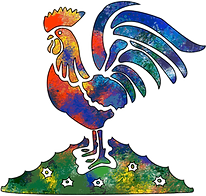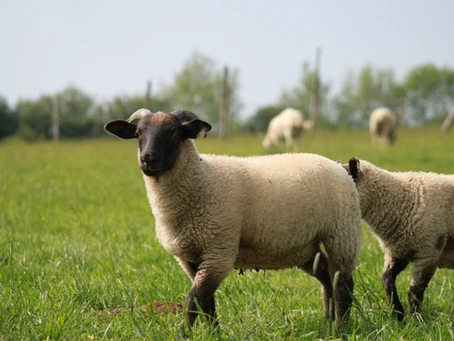Why are we writing this?
Our customers will have noticed that our traditional Cornish White chickens are often in short supply, and our website often lists our chicken produce as ‘out of stock’ (sounds familiar?). This is due to increasing demand for the truly halal, ethically-raised chicken, which is great!
We are very proud of the healthy outdoor life they lead, but this unfortunately comes at a price. We cannot simply add birds to raise production and so compromise on their quality of care. This is precisely why Willowbrook Farm started; to move away from the large-scale production, which I’m sure is why you’ve made the switch to us. We went into farming for the sake of the animals and the environment, so we always aim to ensure they live a happy life in small sustainable flocks.
Our stepping into the unknown world of farming was motivated by a simple and pure intention to follow a halal lifestyle as much as we could, given the confused, topsy turvy world we live in.
So we thought a discussion of white vs red meat might be useful!
Nutrition
Both red meat (lamb, beef) and white meat (chicken, turkey) provide us with nutrients and proteins.nnThe red meats tend to be higher in saturated fat and lower in polyunsaturated fats. On the other hand, chicken and turkey are very low in saturated fat and higher in polyunsaturated fats.
Fat is an essential nutrient that the body needs to function fully. Fats in the diet help the body absorb vitamins and minerals and serve other vital roles. Stored fats in our tissues are critical for energy storage and metabolism, body temperature regulation, and insulation of the vital organs. A diet with too much fat can increase body weight along with a person’s risk of cardiovascular disease. This all boils down to eating in moderation, and doing regular exercise which we should be doing regarding all food intake anyway!nnAll meats provide a decent range of vitamins. However, the major difference is in the vitamin B12 content, which is an essential vitamin responsible for blood cell formation, neurological health and DNA synthesis. Red meat is a much larger source of B12, and also provides significantly more minerals than white meat.nnIn addition to the nutrient profile, meat also contains a variety of bioactive compounds that confer health benefits.nnAs with all foods, eating responsibly and combined with a healthy lifestyle, provides the correct levels of fats, proteins and nutrients for a healthy diet. Just what you should expect as a result of 100s of thousands of years of evolution!
Links to Red Meat and Disease
Cancer – systematic reviews confirm that there is an association between red meat and colorectal cancer. However, they also demonstrate that there is no evidence that red meat causes colorectal cancer. There is currently no causation link.
Considering that the vast majority of people eat ultra-processed food and too much meat, it’s likely that most red meat consumption is part of an unhealthy dietary pattern which is where the association is coming from. We really need to move away from processed foods in order to lead a healthier lifestyle and reduce the chance of health complications later in life.
Cardiovascular Disease – In short, observational studies say yes, but randomized controlled trials say no. Again this presents the same issues raised above. The cause of disease is likely from eating processed meats and also how much we eat is a contributing factor. Some participants in the study were eating hundreds of grams of red meat per day!
Evidence also suggests that how we cook meat determines how healthy (or harmful) it is.
The issue revolves around certain compounds known as heterocyclic amines (HCAs) and polycyclic aromatic hydrocarbons (PAHs). Notably, these compounds are suspected carcinogens and they form when cooking red meat at high temperatures. It’s worth noting that these compounds can form in white meat too! Cooking meat at high temperatures increases the formation of suspected carcinogens. However, there are steps we can take to minimize/mitigate this potential risk. eg slow cook for longer periods
The Environment
In a way the focus of the red meat vs white meat debate, and even the vegetarian/vegan debate has been misplaced. The key question we face today is what foods can we raise sustainably to provide us a mix of the elements required for healthy growth. nnChickens and vegetables are probably the least sustainable foods that we consume currently. For chickens, the high levels of antibiotic usage along with the cramped indoor conditions and the cheap chemically-produced feed all contribute to the horrors of factory farming. Similarly all non-organic vegetables are grown with heavy use of artificial chemical fertilisers, pesticides and herbicides. Their production is polluting our countryside and poisoning the land and the rivers.
So What Can We Do?
The first principle of healthy eating should be to consume only that which can be produced sustainably, from the earth, harming neither the environment or the livestock.
In that regard red meat and organic vegetables come out on top. Chicken has become far too easily obtained and cheaply produced. Truly free range chicken can never be produced in large numbers and as a result should be eaten less often. Lamb and beef are, by the nature of their extensive rearing systems, more sustainable and we can increase their range and numbers without harming the environment. Similarly with organic vegetables the only limitations to growing are the high labour input required to farm naturally.
By choosing modern methods, which rely heavily on machinery and artificial inputs, instead of investing in local labour and naturally healthy organisms, we are harming our environment, our bodies and society. All for the sake of saving ourselves a little money, while large companies make even larger profits.

